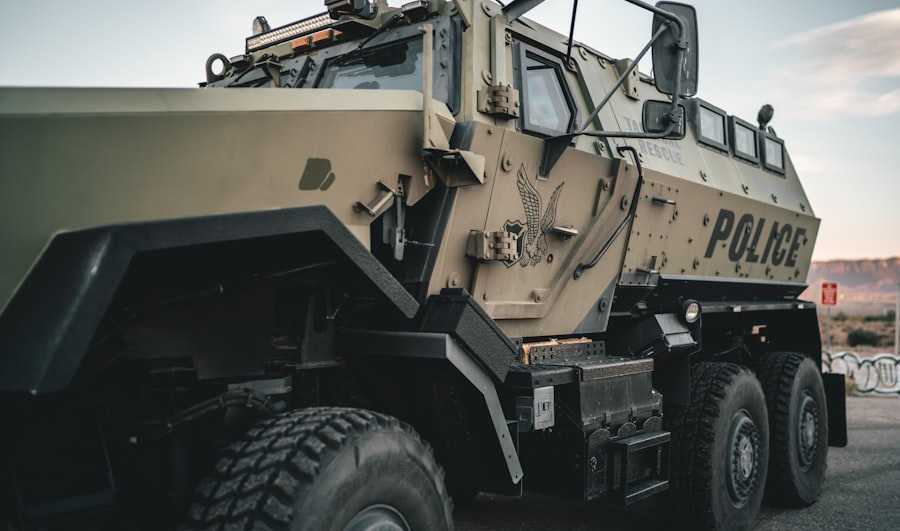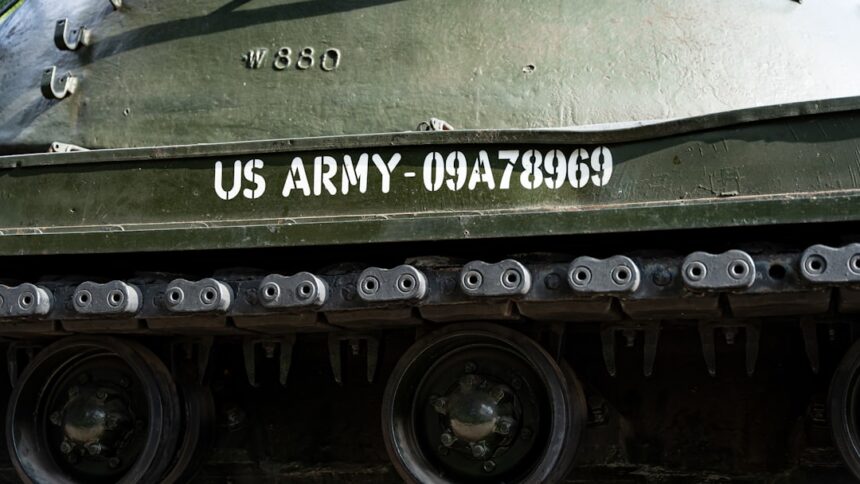Military procurement is a critical aspect of national defense, encompassing the processes through which governments acquire goods and services necessary for military operations. This complex system involves a myriad of stakeholders, including defense contractors, government agencies, and military personnel. The primary objective of military procurement is to ensure that armed forces are equipped with the latest technology and resources to maintain national security and operational readiness.
However, the procurement process is often fraught with challenges, including inefficiencies, cost overruns, and a lack of accountability, which can undermine the effectiveness of military operations. Understanding military procurement is essential not only for policymakers and defense analysts but also for the general public, as it directly impacts national security and the allocation of taxpayer dollars. The intricacies of this process reveal much about how nations prioritize their defense needs and manage their resources.
As global threats evolve, so too must the systems in place to procure military assets, making it imperative to examine the historical context, current challenges, and potential reforms within this vital sector.
Key Takeaways
- Military procurement involves the acquisition of goods and services by the military to support its operations and missions.
- Historical overview shows that military procurement has been a complex and challenging process with a history of cost overruns and inefficiencies.
- Lack of accountability in military procurement can lead to wasteful spending and impact military readiness and effectiveness.
- Cost overruns and wasteful spending are common issues in military procurement, leading to inefficiencies and delays in acquiring necessary resources.
- The influence of politics and lobbying in military procurement can result in failed programs and the need for transparency and accountability in the process.
Historical Overview of Military Procurement
The history of military procurement is as old as warfare itself, with ancient civilizations engaging in the acquisition of weapons and supplies to support their armies. However, the modern era of military procurement began in earnest during the Industrial Revolution when technological advancements transformed the nature of warfare. Nations began to recognize the importance of a structured approach to acquiring military resources, leading to the establishment of formal procurement processes.
Throughout the 20th century, particularly during the two World Wars and the Cold War, military procurement evolved significantly. Governments invested heavily in research and development, leading to groundbreaking innovations such as radar, jet engines, and nuclear technology. The post-war period saw a shift towards more complex procurement systems as defense budgets expanded and the demand for advanced weaponry increased.
This historical backdrop sets the stage for understanding contemporary challenges in military procurement, as many of the systems and practices established during this time continue to influence current operations.
The Complex Process of Military Procurement

The military procurement process is characterized by its complexity and multifaceted nature. It typically involves several stages, including needs assessment, budgeting, solicitation, evaluation, contract award, and post-award management. Each stage requires careful planning and coordination among various stakeholders, including military officials, procurement officers, and contractors.
The need for transparency and efficiency at every step is paramount to ensure that resources are allocated effectively. Moreover, the involvement of multiple agencies can lead to bureaucratic hurdles that complicate the procurement process. For instance, different branches of the military may have varying requirements and standards, necessitating extensive communication and collaboration.
Additionally, the integration of new technologies often requires specialized knowledge that may not be readily available within government agencies. As a result, the procurement process can become protracted and cumbersome, delaying the delivery of essential equipment and services to military personnel.
Lack of Accountability in Military Procurement
| Metrics | Data |
|---|---|
| Number of procurement contracts | 100 |
| Percentage of contracts with accountability measures | 30% |
| Amount of funds lost due to lack of accountability | 1 million |
| Number of investigations into procurement fraud | 20 |
One of the most pressing issues in military procurement is the lack of accountability that often permeates the system. With vast sums of taxpayer money at stake, it is crucial that procurement processes are conducted with integrity and transparency. However, instances of mismanagement and corruption have been reported throughout history, leading to public distrust in how defense budgets are utilized.
The absence of stringent oversight mechanisms can create an environment where inefficiencies thrive. In some cases, contracts are awarded based on political connections rather than merit, resulting in subpar products or services that do not meet military needs. Furthermore, when accountability measures are weak or nonexistent, it becomes challenging to hold individuals or organizations responsible for failures or misappropriations.
This lack of accountability not only undermines public confidence but also jeopardizes national security by compromising the effectiveness of military operations.
Cost Overruns and Wasteful Spending in Military Procurement
Cost overruns are a notorious problem within military procurement, often leading to significant wasteful spending that strains defense budgets. Projects that initially appear financially viable can quickly spiral out of control due to unforeseen challenges or miscalculations. For example, ambitious technological projects may encounter delays or require additional funding to address technical issues that were not anticipated during the planning phase.
These cost overruns can have far-reaching consequences beyond financial implications. When funds are diverted to cover overruns on one project, it can lead to cuts in other critical areas, such as personnel training or maintenance of existing equipment. This misallocation of resources can ultimately compromise military readiness and effectiveness.
As such, addressing cost overruns is essential for ensuring that defense budgets are utilized efficiently and effectively.
Inefficiencies and Delays in Military Procurement

Inefficiencies within the military procurement process can lead to significant delays in acquiring necessary equipment and services. These delays can stem from various factors, including bureaucratic red tape, lengthy approval processes, and inadequate communication among stakeholders. As a result, military personnel may find themselves operating with outdated equipment or lacking essential resources when they are needed most.
The consequences of these delays can be dire. In a rapidly changing global security environment, timely access to advanced technology and resources is crucial for maintaining operational readiness.
Therefore, streamlining procurement processes and reducing unnecessary delays is vital for ensuring that armed forces remain prepared for any eventuality.
Influence of Politics and Lobbying in Military Procurement
The intersection of politics and military procurement is a complex landscape that can significantly influence decision-making processes. Lobbying by defense contractors often plays a pivotal role in shaping procurement policies and priorities. While it is essential for industry representatives to advocate for their products and services, excessive influence from lobbyists can lead to decisions that prioritize corporate interests over national security needs.
Political considerations can also impact procurement decisions at various levels of government. Elected officials may push for specific projects in their constituencies to secure jobs or economic benefits for their constituents, even if those projects do not align with broader military objectives. This politicization of procurement can result in misaligned priorities that detract from effective resource allocation and compromise overall military readiness.
Impact on Military Readiness and Effectiveness
The challenges inherent in military procurement have direct implications for military readiness and effectiveness. When procurement processes are plagued by inefficiencies, cost overruns, or political interference, it can hinder a nation’s ability to equip its armed forces adequately. This lack of preparedness can have serious consequences during times of conflict or crisis when rapid response capabilities are essential.
Moreover, outdated or substandard equipment resulting from flawed procurement practices can jeopardize the safety and effectiveness of military personnel on the ground. Soldiers rely on reliable technology and resources to carry out their missions successfully; any shortcomings in these areas can lead to operational failures or increased risks during combat situations. Therefore, addressing the challenges within military procurement is not merely an administrative concern; it is a matter of national security.
Examples of Failed Military Procurement Programs
Several high-profile examples illustrate the pitfalls of failed military procurement programs throughout history. One notable case is the U.S. Army’s Future Combat Systems (FCS) program, which aimed to develop a new generation of combat vehicles and technologies.
Despite significant investment and ambitious goals, FCS was ultimately canceled due to escalating costs and technical challenges that rendered it unfeasible. Another example is the U.S. Navy’s Littoral Combat Ship (LCS) program, which faced criticism for its design flaws and operational limitations.
Initially touted as a versatile solution for modern naval warfare, the LCS has encountered numerous setbacks that have raised questions about its effectiveness in real-world scenarios. These examples underscore the importance of rigorous oversight and accountability in military procurement processes to prevent costly failures that undermine national security.
Proposed Reforms and Solutions for Military Procurement
To address the myriad challenges facing military procurement, several reforms have been proposed by experts and policymakers alike. One key recommendation is to enhance transparency throughout the procurement process by implementing more robust oversight mechanisms. This could involve establishing independent review boards tasked with evaluating contracts and expenditures to ensure accountability.
Additionally, streamlining procurement processes through technology could significantly reduce inefficiencies and delays. Implementing digital platforms for tracking contracts and managing communications among stakeholders could facilitate faster decision-making and improve overall coordination. Furthermore, fostering collaboration between government agencies and private industry could lead to more innovative solutions that align with military needs while also promoting competition among contractors.
The Need for Transparency and Accountability in Military Procurement
In conclusion, military procurement remains a vital yet challenging aspect of national defense that requires urgent attention from policymakers and stakeholders alike. The historical context reveals a complex landscape shaped by technological advancements and evolving threats; however, contemporary issues such as lack of accountability, cost overruns, inefficiencies, and political influence continue to hinder effective resource allocation. To ensure that armed forces are equipped with the necessary tools to maintain national security, it is imperative to prioritize transparency and accountability within military procurement processes.
By implementing reforms aimed at enhancing oversight and streamlining operations, governments can better serve their military personnel while safeguarding taxpayer interests. Ultimately, addressing these challenges will not only improve military readiness but also reinforce public trust in how defense resources are managed in an increasingly uncertain world.
In recent discussions about the inefficiencies within military procurement systems, a related article sheds light on the broader implications of these flaws.




